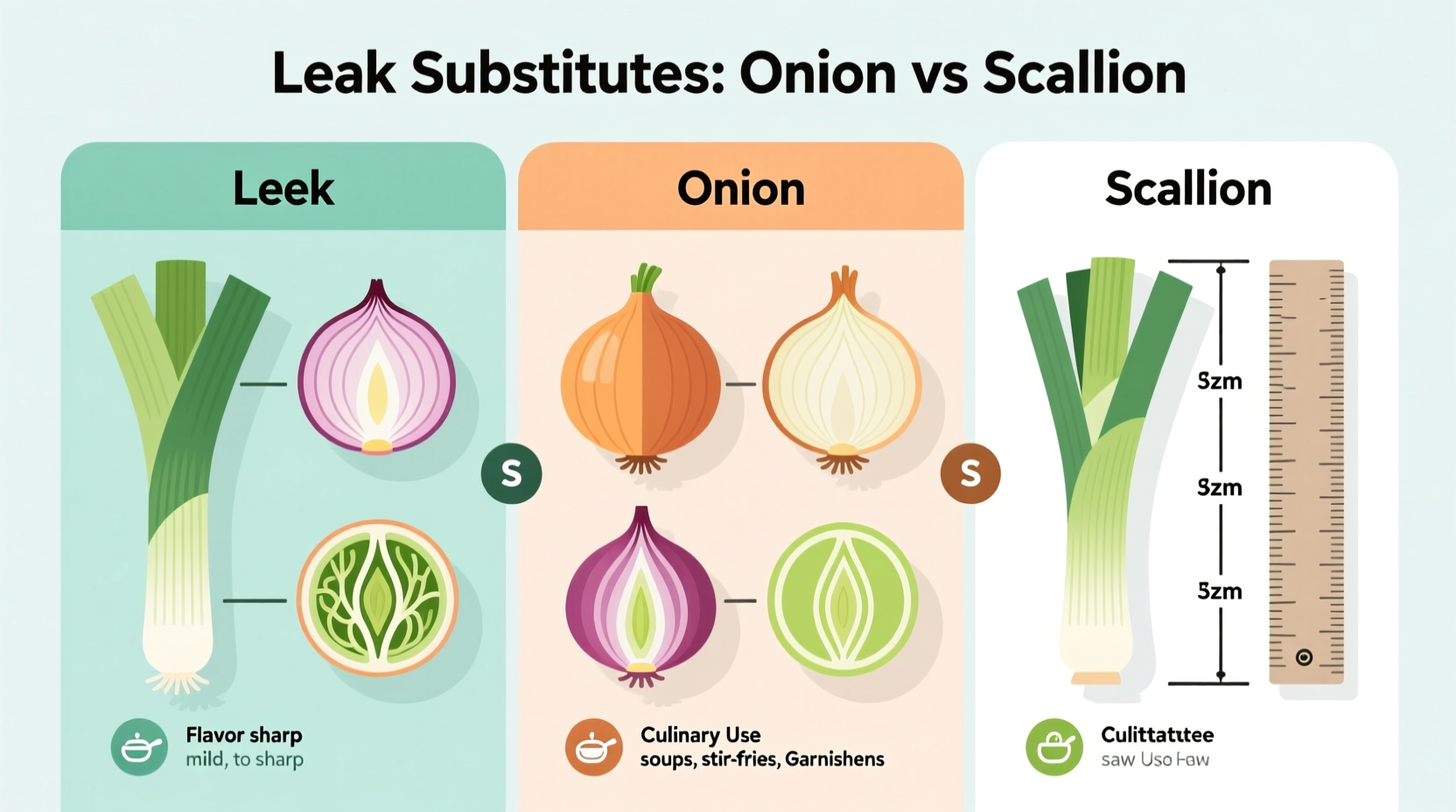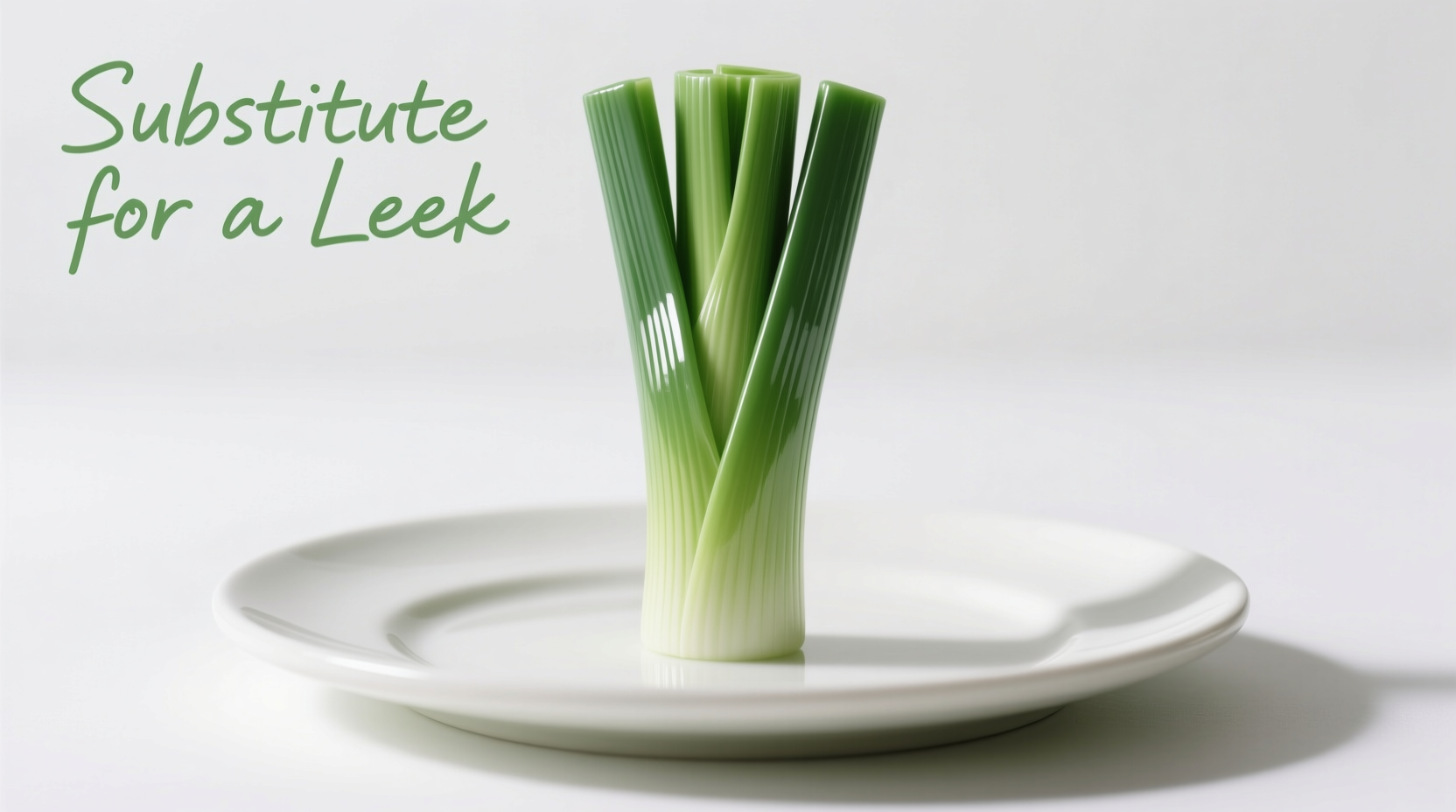If you need a substitute for leek, the best immediate alternatives are scallions (green onions) for raw applications and yellow onions with a bit of water for cooked dishes. For most recipes, use 1 cup of chopped scallions or ¾ cup of finely diced yellow onion per medium leek. Shallots work well in delicate dishes, while ramps are perfect in spring recipes. Avoid strong-flavored substitutes like garlic or red onions unless your recipe specifically calls for bold flavors.
Why Finding the Right Leek Substitute Matters
Leeks occupy a unique space in the culinary world—they're milder than onions but more substantial than chives. When a recipe calls for leeks, it's usually counting on that specific sweet, subtle onion flavor and tender texture. Using the wrong substitute can throw off your entire dish.
According to the USDA FoodData Central, leeks contain just 31 calories per 100g with a distinctive flavor profile that's less pungent than regular onions. This makes them ideal for dishes where you want onion flavor without overwhelming sharpness.
Your Immediate Leek Substitute Options
When you're standing in your kitchen realizing you're out of leeks, here's what to grab from your pantry:
Top 3 Emergency Substitutes
- Scallions (Green Onions) - Use both white and green parts. They provide similar mild flavor but with more bite. Best for salads, garnishes, and quick sautés.
- Yellow Onions with Water - Dice finely and soak in cold water for 10 minutes to reduce sharpness. Use ¾ cup per medium leek.
- Shallots - More delicate than yellow onions. Use ½ cup minced shallot per leek for sauces and delicate dishes.
| Substitute | Ratio (per medium leek) | Best For | Preparation Tip |
|---|---|---|---|
| Scallions | 1 cup chopped | Salads, garnishes, quiches | Use both white and green parts |
| Yellow Onion | ¾ cup finely diced | Soups, stews, casseroles | Soak in cold water 10 minutes |
| Shallots | ½ cup minced | Sauces, delicate dishes | Use raw for subtle flavor |
| Ramps (wild leeks) | 1:1 replacement | Spring dishes, sautés | Use whole when in season |
Understanding Leek's Unique Qualities
Before choosing a substitute, understand what makes leeks special. Unlike their onion cousins, leeks have:
- Milder, sweeter flavor profile
- More delicate texture when cooked
- Distinct layered structure that holds shape
- Higher water content (about 83% vs. 89% in onions)
As noted in research from University of Minnesota Extension, leeks contain different sulfur compounds than onions, resulting in their characteristic subtle flavor that doesn't overpower other ingredients.
Recipe-Specific Substitution Guide
Not all substitutes work equally well in every dish. Match your substitute to your recipe:
For Potato Leek Soup
Use yellow onions with a splash of milk to mimic leeks' sweetness. Sauté 1 cup diced yellow onion with 2 tablespoons butter until translucent, then add ¼ cup milk before adding potatoes. The milk helps replicate leeks' natural sweetness without overwhelming the soup.
For Quiche or Frittata
Scallions are your best bet here. Their similar texture holds up well in egg dishes. Use 1 cup chopped scallions per leek, adding them raw to the egg mixture before baking for the most authentic texture.
For Stir-Fries
Shallots work perfectly in Asian-inspired dishes. Use ½ cup minced shallot per leek, adding them at the same point you would leeks in your recipe. Their delicate flavor complements soy and ginger without dominating.
What NOT to Use as Leek Substitutes
Some common suggestions actually create flavor disasters:
- Garlic - Too strong and changes the entire flavor profile
- Red Onions - Their sharp bite and color will alter your dish
- Chives alone - Lack the necessary substance for cooked dishes
- Leek powder - Completely different texture and concentrated flavor
Food science research from USDA National Institute of Food and Agriculture shows that substituting strongly flavored alliums can alter the chemical composition of dishes, potentially creating off-flavors when heated.
Pro Tips for Perfect Substitutions
Professional chefs use these techniques to make substitutes work seamlessly:
- For raw applications: Soak diced yellow onions in ice water for 10 minutes to reduce sharpness
- For cooked dishes: Add substitutes later in the cooking process than you would leeks
- Flavor balancing: Add a pinch of sugar when using stronger substitutes to mimic leeks' natural sweetness
- Texture matching: For dishes where texture matters (like tarts), use the white parts of scallions sliced lengthwise

When to Skip Substituting Altogether
Sometimes the best substitute is rethinking your recipe. If you're making a dish where leeks are the star (like a classic vichyssoise), consider:
- Using a different recipe that features your available ingredients
- Making a quick trip to the store—leeks keep well for 1-2 weeks refrigerated
- Growing your own—leeks are surprisingly easy to grow in containers
Seasonal Considerations for Leek Substitutes
Your best substitute varies by season:
- Spring: Ramps (wild leeks) are perfect 1:1 replacements
- Summer: Scallions are abundant and flavorful
- Fall/Winter: Shallots provide the closest flavor profile
According to agricultural data from Food and Agriculture Organization, leek availability peaks in late fall through early spring in most temperate climates, making seasonal substitutes particularly valuable during summer months.
Final Thoughts on Leek Substitutes
The perfect leek substitute depends on your specific recipe and what's available. Remember that cooking is flexible—most dishes will still turn out delicious even with substitutions. The key is understanding why the recipe calls for leeks and choosing a substitute that matches those requirements.











 浙公网安备
33010002000092号
浙公网安备
33010002000092号 浙B2-20120091-4
浙B2-20120091-4